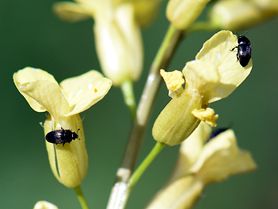Plant phylogeny as a major predictor of flower visitation by nitidulid beetles, a lineage of ancestral angiosperm pollinators
DOI:
https://doi.org/10.26786/1920-7603(2021)636Keywords:
Beetle pollination, Coleoptera, Mediterranean habitats, Nitidulidae, plant phylogeny, phylogenetic signalAbstract
Plant phylogeny sometimes predicts interspecific variation in pollinator composition better than floral features, and its predictive value seems to differ among major groups of insect pollinators. Earlier findings suggesting that pollination by Plant phylogeny sometimes predicts interspecific variation in pollinator composition better than gross floral features, and its predictive value seems to differ among major groups of insect pollinators. Pollination by beetles exhibits the strongest phylogenetic signal and the strongest phylogenetic conservatism, which is particularly intriguing given that beetles were probably the pollinators of early angiosperms. We examine in this paper the relationship between plant phylogeny and flower visitation by nitidulid beetles (Coleoptera: Nitidulidae), an old monophyletic group of flower specialists and pollinators of gymnosperms and angiosperms. Using quantitative data on pollinator composition for 251 plant species (belonging to 167 genera in 46 families) from well-preserved Mediterranean montane habitats from southeastern Spain, the following questions were addressed: Is pollination by nitidulids correlated with plant phylogeny in the large species sample studied, and if it does, which are the relative importances of plant phylogeny, floral characteristics, and environmental features as predictors of nitidulid pollination in the plant assemblage studied ? Nitidulids were recorded in flowers of 25% of the plant species considered. Their distribution was significantly related to plant phylogeny, being clustered on certain lineages (Ranunculales, Malvales, Rosales, Asterales) and remarkably absent from others (e.g., Fabales, Lamiales). None of the environmental (habitat type, elevation) or macroscopic floral features considered (perianth type and color, flower mass) predicted nitidulid visitation after statistically accounting for the effect of plant phylogeny. We theorize that nitidulid beetles use characters of plants that track plant phylogeny at least as deep as the early radiation of the eudicots, imaginably characters such as the chemical signatures of pollen.

Downloads
Published
How to Cite
Issue
Section
License
Copyright (c) 2021 Carlos M Herrera, Carlos Otero

This work is licensed under a Creative Commons Attribution 4.0 International License.











